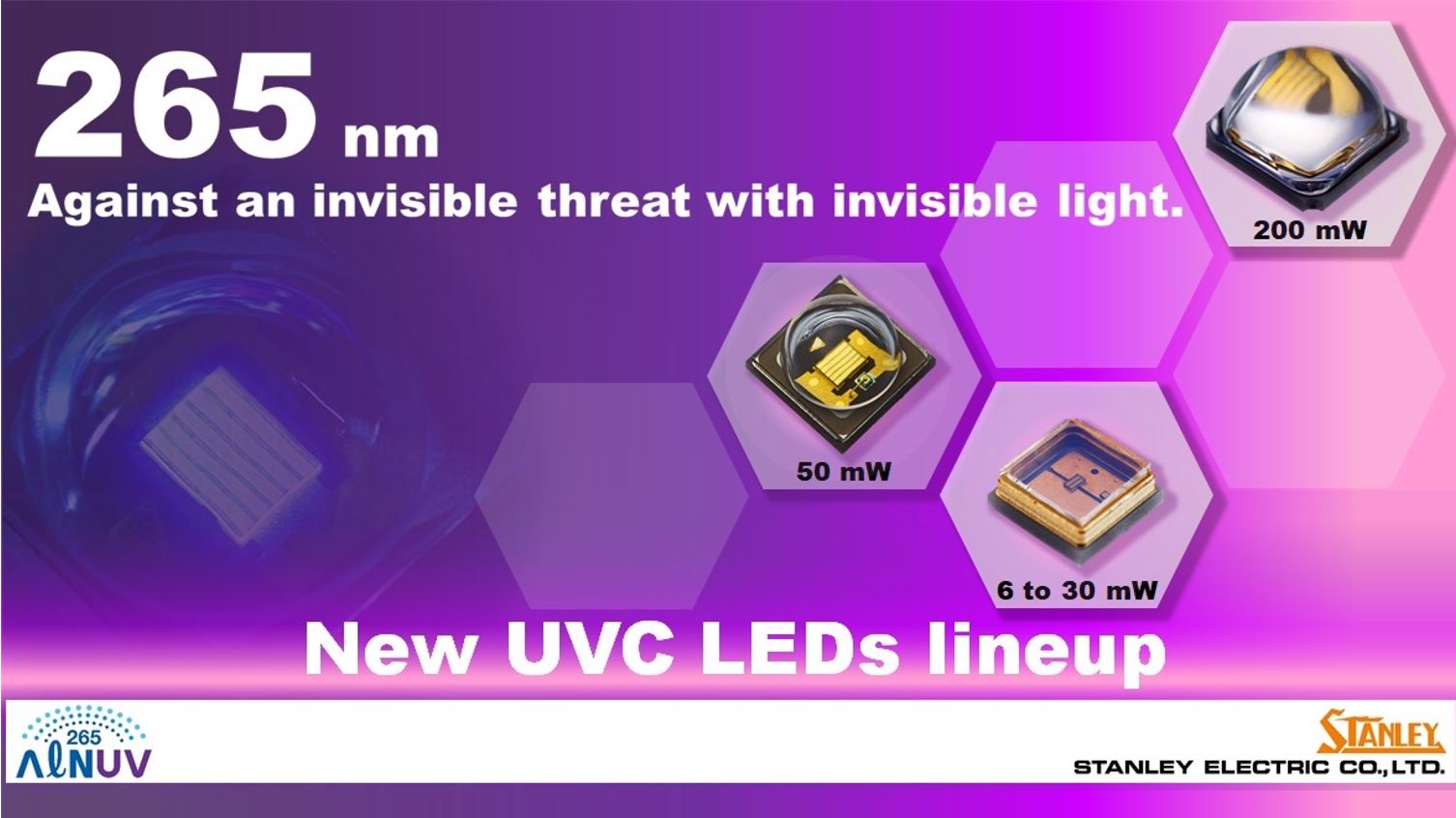
Photo Source: Stanley
Stanley Electric Co., Ltd. (Headquarters 2-9-13 Nakameguro, Meguro-ku, Tokyo, Japan; President and Representative Director: Yutaka Hiratsuka) has announced the results of the evaluation test conducted jointly with Yamaguchi University (Dr. Daisuke Hayasaka, and Dr. Sora Shimoda, Laboratory of Veterinary Microbiology, Joint Faculty of Veterinary Medicine), that their 265nm UVC
On this occasion, we are pleased to announce that the results have been published in the Journal of Photochemistry and Photobiology. The outline of the paper is as follows.
Stanley Electric is developing applied products mainly with the 265nm UVC
Title
Efficiency of 265-nm ultraviolet light in inactivating infectious SARS-Cov-2
-
Highlights
-
・SARS-CoV-2 infection has caused considerable public health and economic concerns.
-
・Irradiation from a 265-nm DUV-LED lamp efficiently inactivated SARS-CoV-2.
-
・UV-LED lamps have potential for practical use as a replacement for LP mercury lamps.
-
・The 265-nm DUV-LED is expected to be applied to safe and useful devices.
-
Abstract
-
Although, Low-pressure (LP) mercury lamps that emit wavelengths of around 254 nm have been widely applied as ultraviolet (UV) light devices for decontamination of microorganisms, they have raised environmental concerns due to their mercury content. Therefore, UV-LED lamps have high potential for practical use as a replacement for LP mercury lamps. In this study, we evaluated the efficacy of 265-nm UV irradiation in comparison to 254-nm and 280-nm UV irradiation for inactivating infectious severe acute respiratory syndrome coronavirus 2 (SARS-CoV-2). Irradiation from a 265-nm deep UV light-emitting diode (DUV-LED) lamp efficiently inactivated SARS-CoV-2 at a similar level as a 254-nm UV cold cathode lamp, and at a higher level than a 280-nm DUV-LED lamp.












